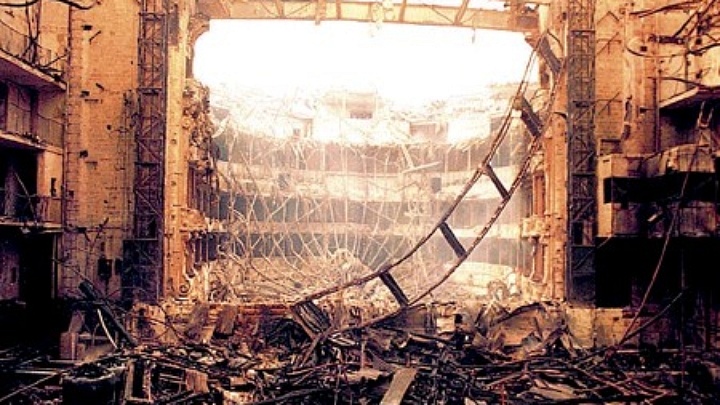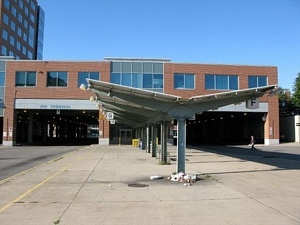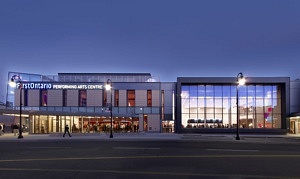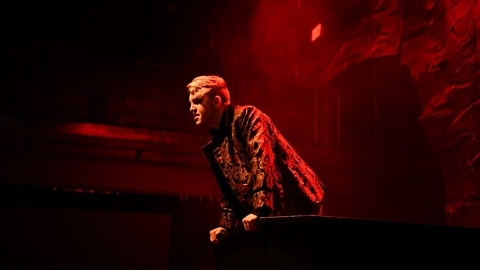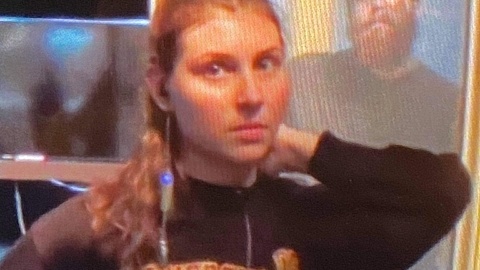For nearly two years, theatre lovers have felt entrapped in their own little purgatories. Artists have been unable to perform on stages, and audiences been...
DopoLavoro Teatrale’s Inferno: Watching the Flames
By Leah Eichler
Welcome back, DARTcritics readers! Leah here again! Did you miss me? Well, even if you didn’t, I am sure you missed reading our coverage of DLT’s Inferno. After attending the In the Soil Arts Festival this past weekend and viewing the show for myself, it is time to report back on my thoughts and experiences. Today, I am here to tell you a tale of long walks, endless questions, chocolate chip cookies, and companionship among strangers.
- Prior thoughts
The last time we posted, you were left with Kristina’s excitement at joining in on the production, inducted into the group by DLT’s production manager Raylene Turner. From Kristina’s writing, I learned that I should expect some form of interaction with my fellow audience members. As Kristina wrote, “It seems… as if one of the goals for this particular project is to build solidarity in differences.” I wondered if this might link to an idea that DLT’s artistic director Daniele Bartolini discussed with me in our May meeting about audience involvement: would building relationships between strangers encourage audience members to forget their roles as audience members? How would the actors be involved in this — and in turn, would it encourage them to forget their roles as performers? How would audience members be led into these scenarios, and what would happen if I was placed in a group of people who weren’t keen on participatory theatre?
I was excited to be brought on an adventure through different kinds of theatre — the kind that moves across the streets, and the kind that requires bums in seats. I was equally curious to see how questioning the purpose of theatre and exploring those different realms might connect to Homer’s Odyssey and Dante’s Inferno. In May, Daniele had mentioned that the show would start outside of the theatre, and that audience members would be led around town by a character from a fantastical world. Perhaps that’s where the classical texts might come into play?
2. The performance
Sunday June 9th arrived. I gathered outside on St. Paul Street with four other audience members. We stood together, suspiciously eyeing every person who passed by our little group, awaiting instruction. Soon enough, we were greeted by a member of DLT who when she introduced herself I knew to be Raylene. She jumped into a quick foreword about Inferno, explaining the experimental nature of the project, and how ultimately the show would be premiering in 2021.
“Follow me,” she instructed. “Keep up the pace, and keep your eyes peeled.”
We set off. Moving at a brisk pace, Raylene led the way down St. Paul Street and over to Carlisle Street, where we walked through the large tunnels of the bus terminal, and around to the back end, where Greyhound buses were being boarded outside. Along the way, I didn’t see anything of particular note, but I was curious about the effect that Raylene’s words had had on our group. It made me question the nature of how everything we witnessed around us could potentially be a performance, since we were in a theatrical bubble of an environment. Was that person sitting in their car someone I should be paying attention to? Or were they exactly as they appeared?
Once we had all gathered together, Raylene showed us a picture of a man on her phone, telling us to look for him. “When you see him, follow him closely,” she instructed. Soon enough, we found who we were looking for, and attached ourselves to his shadow before he could skitter off. Down Carlisle we continued, until the man abruptly turned into St. George’s Anglican Church and wandered down one of the side pathways. We watched him as he crouched down in front of a stone. He picked up a rock briefly, plucked a piece of hair from his head, and replaced the rock with a strand of his hair under it. As he led us back to the FirstOntario Performing Arts Center, I wondered what this gesture was about.
The man stopped abruptly in front of the door to the Robertson Theatre, taking off his cap and slowly wrapping a half-mask in the shape of skeleton eyes and teetharound his face. Ominously, he turned to us and gestured us into the theatre to sit down. The theatre was dark, with a spotlight focused on the man. Slowly, he moved forward, until the light revealed a figure, sitting on a chair with her back to us. Turning her head and revealing a mask on her face, she gave a gasp of surprise just in time to have the man lunge forward. He wrapped his hands around her throat. She struggled and fell back against the chair. Soon, she was limp. Gently, the man lowered her to the floor, and the lights went out. In the darkness, we were all silent, remnants of the violent scene engraved in our eyes. What had it meant that he had attacked that woman?
Moments later the light shone once more on the man, now without a mask. Looking right at us, he smiled and introduced himself as Roy. He initiated a conversation with us about the meaning of theatre, specifically about the relationship between audience and actor. What could theatre look like in the future? It was as if the previous scene, with him strangling the woman, had never happened at all. It was not touched on or spoken of again. Soon, he invited us all up to sit in chairs on stage, facing the audience, and spoke to us for a short while more. The audience-spectator and actor-spectacle relationship was questioned in this time, reflecting my conversation with Daniele back in May. What if audiences could be authors of the stories they saw in theatre? Roy asked us to consider this as we continued through the rest of Inferno.
The woman from earlier — the one who had been strangled — appeared behind us, now maskless. With a smile, she gestured us to follow her backstage. She took us into two very small, curtained rooms set with a table and chairs. She split us into two groups — I was in one room with a man named Dave, and the remaining audience members were in the other. Curiously, we regarded a piece of paper taped to the table. On it were a list of questions. “Well,” I said with a shy laugh, “I guess we should answer these.”
The questions led us through two main subject areas: ourselves and theatre. We told each other memorable personal stories, we discussed what the best theatre we’d ever seen was, we talked about why we were in the theatre that day. After a short while, an alarm began to sound, red lights flashed above our heads, and a voice informed us that we were being evacuated. Our full group met up together, and we were led outside of the building.
The outside world was bright and sunny, just as we had left it. We were greeted by a young woman and a young man, who offered us cookies and iced tea. They told us that we’d almost reached the end of our adventure in Inferno and invited us to sit down on blankets draped over the green grass of a hill. We were given time to finish answering the questions we’d been reading inside, and by this time there was a sense of friendly companionship between us. We were joking, laughing, and sharing our experiences. Once we’d finished, we were given a final question: if we could elect a leader from our group, democratically or not, who would we choose? It turned into a split vote electing myself and another woman, and like the dignified newly-appointed officials that we were, we decided upon a co-leadership situation.
And that was it.
As swiftly as the experience had begun, it ended. The young woman gave us each a sheet of paper, explaining that there was one more thing we could do optionally, but that the performance was over. We audience members continued to sit on the blankets for a moment more, reading over the instructions. “Take a walk around the downtown,” it read. “Identify evidence of hell in this city. Find a specific place that represents hell for you and stay there for at least a minute without talking … Once you find a place, think about a gesture that would make the place better.” I was not sure where this idea of hell in St. Catharines had come from; it would be one of the subjects I reflected on later.
3. Afterwards
One concern that stuck out to me about Inferno was accessibility. While I knew from my conversation with Daniele that we would be walking around St. Catharines for part of the performance, at no point was this told to audiences in advance on the In the Soil website, or in the pamphlet at the festival. Furthermore, we moved at a verybrisk pace, which was somewhat difficult for me as my feet were covered in blisters due to my time flitting from activity to activity at the festival all weekend. It occurred to me that someone who was in a differently abled position would have been unable to keep up — especially since our routes involved stairs and required climbing up and down parts of the street that were not slopedto accommodate wheelchairs. This, I believe, is something that needs to be addressed in future renditions of the show.
At many times it felt as if the theme or general thought pattern of the production was a little confused. There was a minimal connection to Dante’s Inferno, except for the piece of paper we were given at the end, which referenced hell — the setting of Dante’s Inferno. Certain elements of the show might have hinted at this too, such as Roy’s skull mask, with the skull being a symbol of death and the afterlife which would relate to hell, but these were not explained. Roy strangling the woman on stage might have been evidence of hell; or perhaps it was meant to be symbolic of the harassment that women experience in theatre. Another theme that popped up and disappeared occasionally was questioning theatrical practices that have become mainstream, such as the audience being passive viewers, and theatre being entertainment. This was brought up at various times, such as when Roy was speaking to us directly, or in the content of the questions on the piece of paper – but then, moments later, our attention would be drawn to unrelated topics. A question on the paper about our experiences with theatre was followed by one about what we did for a living. The relationship between three themes — hell, our individual experiences with the theatre world, and the amicable connection that could be formed between audience members — was murky.
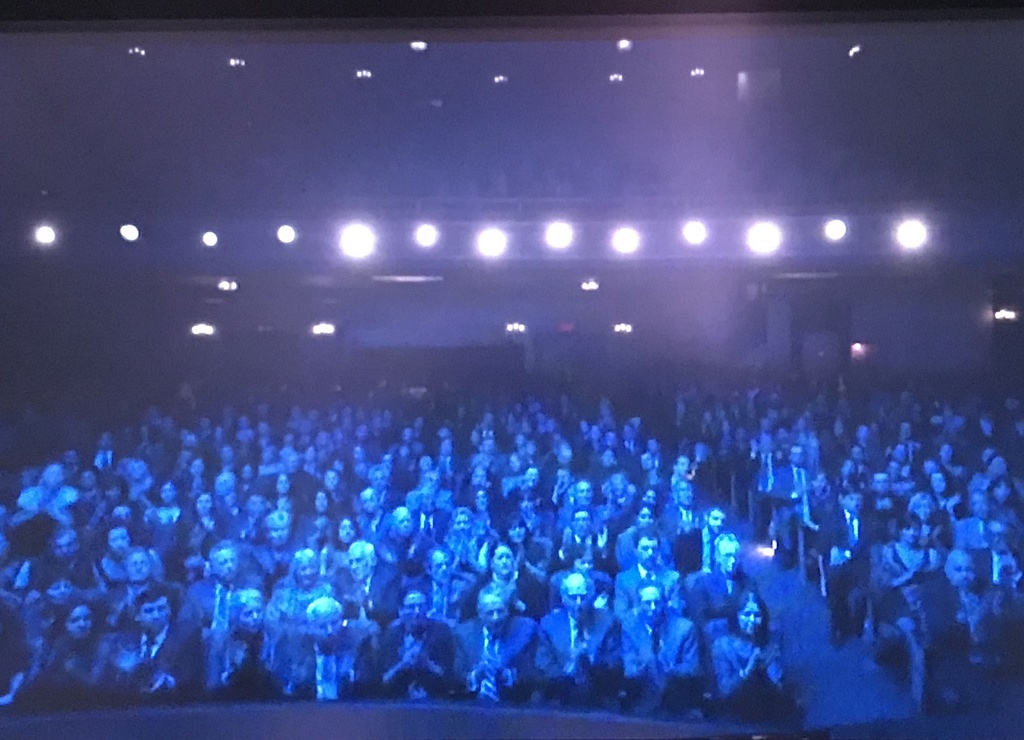
The sort of traditional theatre audience/stage relationship that DLT is trying to question in this production
Overall, my experience of Inferno was pleasant. The experiment absolutely accomplished the goal of giving audience members a sense of camaraderie. Sitting out on the grassy hill in the sun, eating cookies and telling strangers my favourite childhood story is a strong memory when I think back on that day. Genuinely, I enjoyed myself. Walking through St. Catharines, although painful with my blistered feet, was refreshing. And throughout the entire experience, my sense of curiosity was alert. I think the show could have benefitted, however, from providing the audience with a bit more explanation on the different activities we were doing. While it is not an artist’s job to hold the hand of audience members by explaining every detail of their work, much of Inferno was left too open-ended to be properly comprehended. So much of the experience seemed vague and disconnected that it was difficult to pick out what was intended.
I have multitudes of questions. What was the meaning of Roy strangling the woman? Why were we led to the bus terminal? Will future iterations of the show have more elements of the Odyssey or the Inferno in them? Why were we led out of the building under the guise of an evacuation, when just asking us to leave would have been equally effective (was there another meaning to the evacuation)? Why did Roy leave a piece of his hair under the stone? What connection is there between the relationship of our group of strangers and the idea of hell? On and on and on my brain circles through these questions and various others in an attempt to make better sense of the experience.
What I saw was an experiment, not anywhere close to a finished performance. With Inferno (subtitled Experiment 1) DLT tested out ideas for future iterations of the show. I burn with curiosity wondering what they learned from these performances and what future iterations of the show will look like. That being said, in the future, I think that DLT would be better served to communicate to audiences the role which they will be taking on in these experiments before they arrive to see the show. From my experience, the audience-as-beta-testers environment was not conveyed adequately beforehand. Instead, it was only explained once the audience had gathered on the day of the show. Still, the experience was memorable in a positive way. I will be keeping my eyes peeled in 2021 when all of this valuable work comes to fruition. It has been a pleasure being a part of DLT’s creation process. I cannot wait to see what becomes of Infernoin the future.
Related Posts
It’s been a few weeks since the final performance of Brock University Department of Dramatic Arts’ Fall Mainstage, Scenes from an Execution. Closing off their...
Here’s Holly Hebert’s final solo vlog from behind the scenes of the Fall 2020 DART Mainstage, Scenes from an Execution. She and Asenia will round off this...
It’s been a few weeks since the final performance of Brock University Department of Dramatic Arts’ Fall Mainstage, Scenes from an Execution. Closing off their...
Here’s Holly Hebert’s final solo vlog from behind the scenes of the Fall 2020 DART Mainstage, Scenes from an Execution. She and Asenia will round off this...
Leave a Reply (Cancel Reply)
Twitter Feed
Blogroll
DARTcritics.com is partially funded by the Marilyn I. Walker School of Fine and Performing Arts, in support of student learning; experiential education; student professionalization; public engagement with the teaching, learning and production activities of the Department of Dramatic Arts; new ways of thinking; and the nurturing of links with our communities.

